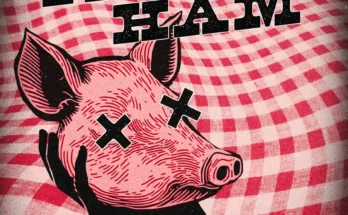“The Entertainer. He did it all.” So reads the stone on Sammy Davis Jr.’s grave at Forest Lawn Memorial Park outside Los Angeles.
And he did. Singer, dancer, child star, recording artist, actor, icon.
Vaudeville. Broadway. Hollywood. Mr. Bojangles. The Candy Man.
Sammy is recognizable at a glance. His easy slouch and Pepsodent smile. The oiled hair and caterpillar mustache. A hip cat with heavy jewelry, an upbeat attitude, an aptitude for slang, man, a cigarette glued to the fingers of his right hand.
Sammy Davis Jr. was a Sagittarian born in Harlem in 1925. He was in vaudeville with his dad by age 3. He lost an eye, and nearly his life, in 1954. Throat cancer killed him in May 1990 at age 64. In between he did a whole lotta living. He was loved and hated and endlessly debated.
“Being a star made it possible for me to get insulted in places where the average Negro could never hope to go and get insulted,” he once said.
“Before the ‘60s, Davis imitated whites,” author Gary Fishgall wrote in the 2003 biography Gotta Do Great Things. “Afterward, as he tried to go with the times, the best he could do was to imitate being black.”
For better or worse, Sammy’s life was a public one. Here’s a closer look at the self-proclaimed “one-eyed Negro Jew.”
The early days
School: He never attended. His dad, Sammy Sr., would hire tutors while they were on the vaudeville circuit with Will Mastin but just until truant officers stopped sniffing around.
In the Army: Sammy was drafted in 1943 at age 18. He was relentlessly harassed by white soldiers, took constant beatings, had his nose broken twice and once had “coon” written on his forehead. In an entertainment regiment he learned, he said, that his dancing and singing could counter bigotry.
The 1950s
Headlining: Sammy’s name dominated the Frontier Casino marquee in Las Vegas, but he had to stay in a rooming house across town; had no dressing room; couldn’t gamble, drink or dine in the hotel; and had to wait outside between acts like every other black performer.
The accident: He nearly died on Nov. 19, 1954, when he crashed his convertible en route to Los Angeles. He lost his left eye, wore a patch for six months, and then used a glass or plastic eye the rest of his life. Friends said you could tell when he was overtired because he’d ferociously rub the missing eye.
Judaism: His conversion came from self-scrutiny after the crash. Friend Eddie Cantor talked to him about the similarities between the Jewish and black cultures. Sammy concluded that Judaism “teaches justice for everyone.”
Wife No. 1: Wed dancer Loray White in 1958. They divorced in 1959. In Green Felt Jungle, a 1963 book about Las Vegas crime and corruption, authors Ed Reid and Ovid Demaris maintain that mobsters forced Sammy into the marriage to stop him from proposing to white actress Kim Novak.
The 1960s
Wife No. 2: Wed May Britt, a Swedish actress who was white, in 1960. They had one daughter and two adopted sons. Sammy was rarely home. They divorced in 1968.
Hate mail: It began when he married May and escalated in 1964, when he did the Broadway musical Golden Boy. The show, which featured an interracial love affair, was in stark contrast to the more mainstream Hello, Dolly! and Funny Girl.
Rat Pack days: He and pals Frank Sinatra, Dean Martin, Joey Bishop and Peter Lawford were known for womanizing and heavy drinking, but in a 1998 interview Joey Bishop said: “I never saw Frank, Dean, Sammy or Peter drunk during performances. That was only a gag.”
The 1970s
Wife No. 3: Wed Altovise Gore, a Golden Boy dancer, on May 11, 1970. They adopted a child and remained married until his death. She died March 14, 2009.
Accolades
Grammys: Nominated in 1962 for the single “What Kind of Fool Am I?”and in 1972 for “The Candy Man.” Earned a Lifetime Achievement Award in 2001 and, in 2002, joined the Hall of Fame. For 24 years, beginning in 1955, he recorded more than 45 albums on five labels. Among them: “The Wham of Sam!” and “I’ve Gotta Be Me.”
Emmys: Nominated in 1956, 1966, 1980 and 1989. Won in 1990 for “Sammy Davis Jr.’s 60th Anniversary Celebration.”
Tonys: Nominated in 1965 for Golden Boy.
Movies: His 57-year career began with Rufus Jones for President in 1933 and ended with The Kid Who Loved Christmas in 1990. On the list: Porgy and Bess (as Sportin’ Life), Oceans Eleven, Robin and the 7 Hoods, Sweet Charity and Diamonds Are Forever.
Miscellaneous: Has stars on the Las Vegas Walk of Stars and the Hollywood Walk of Fame. Was a Kennedy Center honoree in 1987 and won an NAACP Image Award in 1989.
Milestones
1960s: Began refusing work at places that practiced segregation. He’s credited with helping integrate clubs in Miami Beach and Las Vegas.
1970s: He and Altovise are believed to be the first African-Americans to sleep in the White House, as Richard Nixon’s guests. Sammy wouldn’t sleep in the Lincoln bedroom, though. He pictured the famous former president saying, ‘I freed them, but I sure didn’t want them to sleep in my bed.’ ”
1980s: Gave his final performance at Harrah’s in Lake Tahoe in the fall of 1989, just before he began radiation treatment for his cancer.
The end
More than 25 fellow entertainers saluted Sammy in a 2.5-hour TV tribute on Feb. 4, 1990. Sammy was frail and did not speak but rose to do a brief soft-shoe to a standing ovation.
Died at his Beverly Hills home on May 16, 1990.
Two days later the neon lights of the Las Vegas strip were darkened for 10 minutes in Sammy’s honor.
Kathy Janich is an Atlanta theater artist and freelance writer. After years in daily newspapers, she’s found a joyous second career as an artistic associate at Atlanta’s Synchronicity Theatre, www.synchrotheatre.com.



